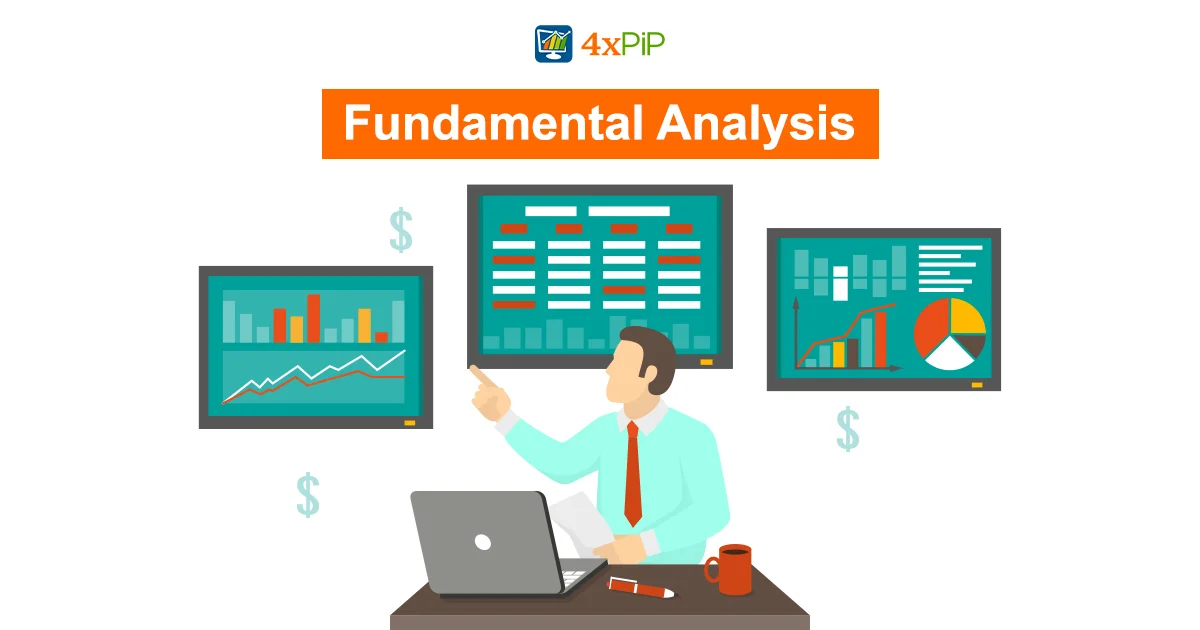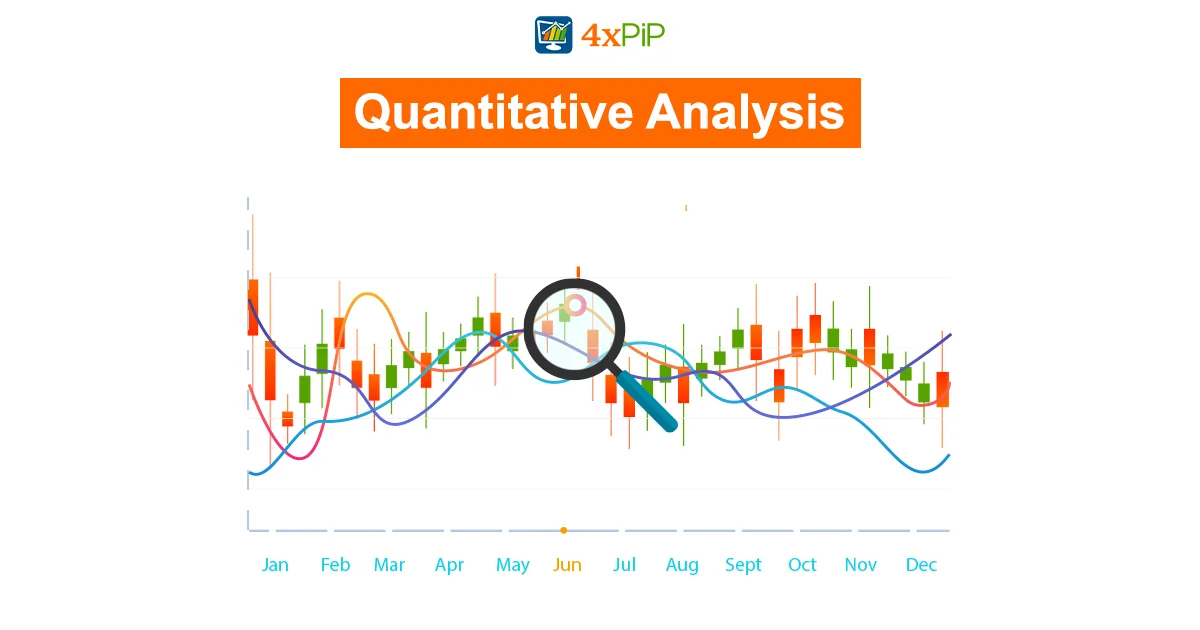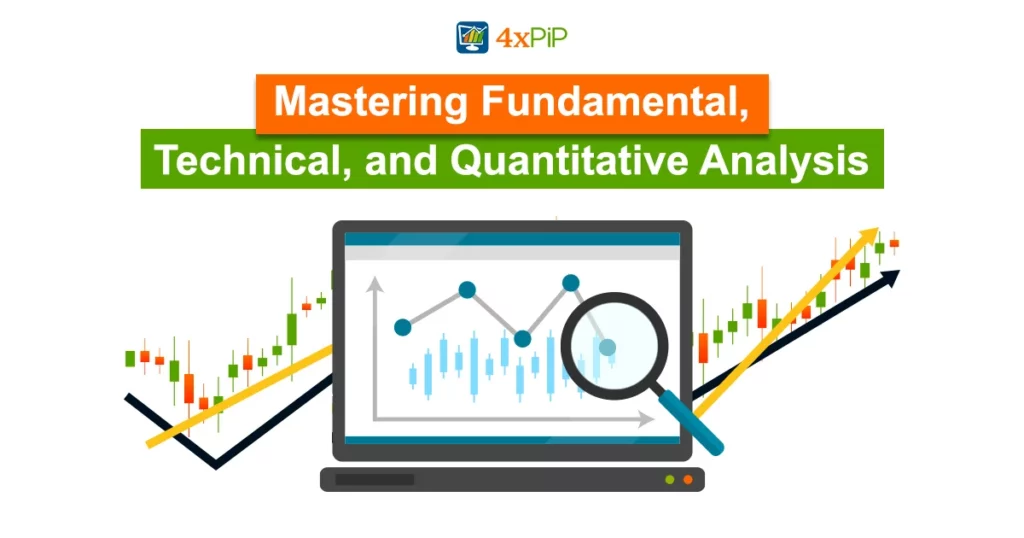Mastering Fundamental, Technical, and Quantitative Analysis is a crucial step on the journey to becoming a successful trader. These three pillars form the foundation of making informed decisions in the dynamic world of trading, whether it’s in cryptocurrencies, forex, stocks, or any other financial market.
Fundamental analysis looks at the economic and financial health of assets, technical analysis focuses on price patterns and historical data, and quantitative analysis involves using mathematical models to predict market movements. In this article, 4xpip will guide you through these essential analytical approaches, providing valuable insights for traders at all levels of expertise. Contact 4xpip at [email protected] if you need any help regarding this.
Technical Analysis:

Technical analysis, a key component of mastering the art of trading, is all about studying past price movements and chart patterns to predict future market trends. One of the fundamental principles of technical analysis is the belief that historical price and volume data can provide valuable insights into the future direction of an asset’s price. By examining charts and patterns, traders aim to identify trends, reversals, and potential entry or exit points. Common technical analysis tools include moving averages, support and resistance levels, and various indicators such as the Relative Strength Index (RSI) and Moving Average Convergence Divergence (MACD) which 4xpip offers.
Key Points:
Price Charts: Technical analysts rely on price charts, which can be in the form of candlestick, bar, or line charts, to visualize an asset’s historical price movements.
Support and Resistance: Identifying key support (price floor) and resistance (price ceiling) levels is vital for understanding potential price reversals.
Indicators: Traders often use technical indicators like RSI, MACD, and Bollinger Bands to assess market momentum and overbought/oversold conditions.
Trend Analysis: Recognizing trends, such as uptrends (bullish) and downtrends (bearish), helps traders make informed decisions on when to buy or sell.
Chart Patterns: Common chart patterns like head and shoulders, double tops, and flags provide insights into potential price movements.
Moving Averages: Traders use moving averages to smooth out price data and identify trend directions.
Technical analysis, when used in conjunction with other analytical methods, can be a valuable tool for traders to make more informed decisions in the complex world of trading. By understanding these key elements, traders can better navigate the turbulent waters of the financial markets.
Fundamental Analysis:

Fundamental analysis is like peeling back the layers of an onion to understand the true value of an asset. It’s the bedrock of traditional investing and an essential tool for traders in markets like stocks, forex, and cryptocurrencies. At its core, fundamental analysis is about evaluating the economic, financial, and qualitative aspects of an asset to determine its essential value. This means digging into the company’s financial statements, management quality, industry trends, and broader economic factors. By doing so, traders can make more informed decisions, whether they’re considering a long-term investment or estimating the potential of a currency or a stock.
Key Points:
Financial Statements: Start by examining an asset’s balance sheet, income statement, and cash flow statement. These documents provide insights into the company’s financial health, including its assets, liabilities, and earnings.
Management Quality: Assess the competence and trustworthiness of the company’s management team. Strong leadership can drive a company’s success.
Industry Analysis: Consider the industry in which the asset operates. Are there growth opportunities, or are there risks that could impact the company’s performance?
Intrinsic Value: Fundamental analysis aims to find the intrinsic value of an asset. If the current market price is lower than this value, it may be considered undervalued and a potential buying opportunity.
Long-Term Perspective: Fundamental analysis is often used by long-term investors who want to hold assets for an extended period. However, it can also be valuable for short-term traders to understand the bigger picture.
In your quest to master fundamental analysis, don’t forget to equip yourself with the right tools. And here’s where 4xPip comes into the picture, offering you two essential aids – the “Forex News EA” and the “News Stopout EA.” The “Forex News EA” provides real-time access to breaking economic news, giving you a critical edge in making informed decisions, while the “News Stopout EA” helps you automatically trigger stop-loss orders during volatile market times, acting as a protective shield for your investments.
Quantitative Analysis:

Quantitative analysis, often referred to as “quant” analysis, is a cornerstone of trading that brings a scientific and mathematical approach to decision-making. In simple terms, it involves using mathematical and statistical models to predict and understand market behavior. This analysis provides traders with a systematic framework for making sense of the seemingly chaotic world of finance. By analyzing historical data and identifying patterns, quantitative analysis can help traders identify trends, assess risk, and make more informed decisions. It’s particularly popular in algorithmic trading, where automated systems use mathematical algorithms to execute trades at lightning speed.
Key Points:
Mathematical Models: Quantitative analysis relies on mathematical models and statistical techniques to analyze market data. These models help traders make predictions based on historical information.
Risk Assessment: By utilizing quantitative models, traders can assess and manage risks more effectively. These models can identify potential pitfalls and guide traders in developing risk mitigation strategies.
Algorithmic Trading: Quantitative analysis is closely associated with algorithmic or “algo” trading, where computer programs execute trades based on predefined criteria. This approach is designed to remove emotional biases from trading.
Data-Driven Decisions: Quantitative analysis places a heavy emphasis on data. Traders use data-driven insights to inform their trading strategies, allowing for more precise decision-making.
Backtesting: Traders often use historical data to test and refine their quantitative models. This process, known as backtesting, helps ensure the effectiveness of their strategies.
Market Efficiency: Quantitative analysis also involves assessing the efficiency of markets, helping traders identify opportunities where asset prices may deviate from their intrinsic values.
Constant Evolution: The field of quantitative analysis is constantly evolving as traders and researchers develop new models and algorithms to adapt to changing market conditions.
Incorporating quantitative analysis into your trading toolkit can provide a structured and systematic approach to your decision-making process, helping you navigate the complex and dynamic world of financial markets.
Navigating the Complex World of Trading:
Trading can be both exhilarating and challenging. As traders, we dive into the dynamic world of financial markets, where opportunities and risks are intertwined. It’s a journey that requires dedication, continuous learning, and the ability to adapt to ever-changing market conditions.
Keep in mind that there’s no one-size-fits-all approach to trading. What works for one trader might not work for another. Don’t be disheartened by losses; they are an integral part of the trading experience. Instead, use them as opportunities to learn and refine your approach.
Remember that while the road to mastering trading analysis might be challenging, the rewards of financial independence and personal growth make it a journey worth taking. Stay persistent, stay informed, and enjoy the excitement of the trading world.
Pros and Cons:
Trading, whether in cryptocurrency, forex, stocks, or any financial market, offers a unique blend of opportunities and challenges. Understanding the pros and cons of this dynamic field is crucial for anyone looking to master fundamental, technical, and quantitative analysis.
Pros
One of the key advantages of mastering fundamental, technical, and quantitative analysis is the ability to make well-informed trading decisions. Fundamental analysis allows traders to assess the financial health of assets, giving them insights into the long-term potential of their investments. Technical analysis helps traders identify short-term trends and patterns, aiding in entry and exit strategies. Quantitative analysis, with its mathematical models, provides a scientific approach that can help traders make sense of market data and predict future movements. These analytical tools empower traders to develop strategies based on a combination of these methods, ultimately increasing their chances of success in the trading world.
Cons
While fundamental, technical, and quantitative analysis offer valuable insights, there are certain drawbacks to consider. Fundamental analysis, for instance, can be time-consuming, as it involves researching and analyzing financial reports and economic indicators. Technical analysis relies heavily on historical data, which may not always accurately predict future market behavior. Quantitative analysis, though highly systematic, can sometimes be limited by the assumptions and simplifications made in mathematical models. Additionally, overreliance on these analyses can lead to missed opportunities or erroneous decisions, as market dynamics are influenced by a multitude of factors beyond what these methods can encompass. It’s crucial for traders to strike a balance and use these tools in conjunction with a comprehensive understanding of the market to mitigate these limitations.
Summary:
In this guide, we’ve looked into the core elements of trading – Fundamental Analysis, Technical Analysis, and Quantitative Analysis. These analytical pillars are the foundation for making informed decisions in various financial markets, such as cryptocurrencies, forex, and stocks.
By mastering these analytical approaches, traders equip themselves with the necessary tools to navigate the complex and dynamic financial markets. It’s vital to comprehend both the advantages and limitations of each method and learn to strike a careful balance between them. In the ever-evolving realm of trading, this knowledge becomes a critical asset, empowering traders to improve decision-making and increase their chances of success.





